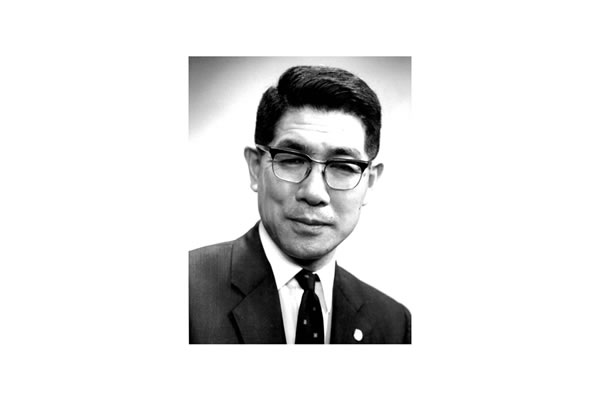How The Dale Carnegie Leadership Course Started
From the formation of modern corporate companies in the 18th century, business owners came to rely on professional managers to run their businesses. The employment of managers meant there was a need for training them. Practical training in leadership was not readily available though, so there was a lot of trial and error going on in companies.
Following the establishment of his company in 1912, Dale Carnegie created the the Dale Carnegie Course. It gradually evolved from a public speaking programme into a leadership course, focused on persuasion power and excellent human relations skills. The course received a huge boost in popular interest with the publication of Dale Carnegie’s global best seller “How To Win Friends and Influence People” in 1936. The demand for the course exploded and this has become one of the core courses for all business professionals.
In the postwar period, most of the management techniques came straight out of the military, as serving officers returned to the civilian workforce following the end of WWII. This meant they were mainly top down, hierarchical constructs, which didn’t really suit peacetime corporations. The Dale Carnegie Course had been very successful in the persuasion, communication and people skills areas, but there was a need for more practical leadership tools.
In the early 1960s, John Cooper, who was responsible for the Dale Carnegie Course & the Dorothy Carnegie Course, Percy Whiting and various staff put together an internal management training program to bring a much needed leadership and management programme to the Dale Carnegie Sponsors. Today we would call these “Sponsors” Franchisees and they were allocated territories and given the rights to teach the Dale Carnegie Curriculum. There was a need for corporations to be better organized and for the leaders to be better trained in the soft skills elements of running their companies.
The curriculum Dale Carnegie & Associates came up with for the initial management seminar came from the combined knowledge and background of each staff member. For example, John Cooper had been an Army Colonel and had attended command training. This type of management training was needed because most of the "sponsors" had no business background, because they were teachers, engineers, scientists etc.
Whit Whitlow, who represented Dale Carnegie in Hawaii as a Sponsor, had two successful business schools in addition to his Dale Carnegie business. He had written a management lecture series called the Management Seminar. Whitlow had been very successful with his leadership programme, because it was practical and better suited to the demands of modern corporations. John Cooper flew to Hawaii to participate in Whitlow’s program in 1963. After some further research and testing, the two programs were merged and it was called the Management Seminar. Whit Whitlow entered an agreement with the Dale Carnegie & Associates to allow the usage of his IP and the course went global.
In 1967 the ideas for this program had evolved further and it was renamed the Dale Carnegie Supervision and Management Seminar. In 1976 a new textbook was created for the management seminar called Managing Through People. In 1992 some further improvements were made and it was renamed the Leadership Training for Managers Course.
This course was very much the required toolkit for people placed in leadership positions. It covered what was leadership, how to communicate, coach, delegate, discipline, innovate, run meetings etc., all the highly practical knowledge a leader would need to be successful.
In 1991 Dale Carnegie began to test the outcome of two day in person programmes. How to Communicate with Tact and Diplomacy and Step Up to Leadership were created with encouraging results. In 1993, the book, “The Leader In You” by Michael Crom and Stuart Levine was published. This was followed by a course of the same name.
In 2019, after much research and testing, two new programmes were launched, The Develop Your Leadership Potential Course for new leaders and the Leadership Training For Results Course for experienced leaders.
Famous American football coach of the Green Bay Packers, Vince Lombardi, often spoke about the importance of blocking and tackling, as the basics of the game. The Leadership programmes developed by Dale Carnegie were in that vein. Carnegie himself had realized he wasn’t going to replace what was being taught by America’s Ivy League Universities, so he always focused on providing the most practical knowledge and immediately applicable skills possible. Participants attending his courses immediately recognized this and saw the value in the training.
As a result, thousands of graduates of his programmes around the world have become the senior leaders of their organizations, because they had the required skill sets to be successful. The blend of Dale Carnegie’s human relations philosophy and advanced communication skills has made his leadership programmes stand out and retain their popularity. Also, the willingness to keep refreshing the courses, has allowed Dale Carnegie’s leadership training to remain relevant, continually serving companies, generation after generation.
Following the establishment of his company in 1912, Dale Carnegie created the the Dale Carnegie Course. It gradually evolved from a public speaking programme into a leadership course, focused on persuasion power and excellent human relations skills. The course received a huge boost in popular interest with the publication of Dale Carnegie’s global best seller “How To Win Friends and Influence People” in 1936. The demand for the course exploded and this has become one of the core courses for all business professionals.
In the postwar period, most of the management techniques came straight out of the military, as serving officers returned to the civilian workforce following the end of WWII. This meant they were mainly top down, hierarchical constructs, which didn’t really suit peacetime corporations. The Dale Carnegie Course had been very successful in the persuasion, communication and people skills areas, but there was a need for more practical leadership tools.
In the early 1960s, John Cooper, who was responsible for the Dale Carnegie Course & the Dorothy Carnegie Course, Percy Whiting and various staff put together an internal management training program to bring a much needed leadership and management programme to the Dale Carnegie Sponsors. Today we would call these “Sponsors” Franchisees and they were allocated territories and given the rights to teach the Dale Carnegie Curriculum. There was a need for corporations to be better organized and for the leaders to be better trained in the soft skills elements of running their companies.
The curriculum Dale Carnegie & Associates came up with for the initial management seminar came from the combined knowledge and background of each staff member. For example, John Cooper had been an Army Colonel and had attended command training. This type of management training was needed because most of the "sponsors" had no business background, because they were teachers, engineers, scientists etc.
Whit Whitlow, who represented Dale Carnegie in Hawaii as a Sponsor, had two successful business schools in addition to his Dale Carnegie business. He had written a management lecture series called the Management Seminar. Whitlow had been very successful with his leadership programme, because it was practical and better suited to the demands of modern corporations. John Cooper flew to Hawaii to participate in Whitlow’s program in 1963. After some further research and testing, the two programs were merged and it was called the Management Seminar. Whit Whitlow entered an agreement with the Dale Carnegie & Associates to allow the usage of his IP and the course went global.
In 1967 the ideas for this program had evolved further and it was renamed the Dale Carnegie Supervision and Management Seminar. In 1976 a new textbook was created for the management seminar called Managing Through People. In 1992 some further improvements were made and it was renamed the Leadership Training for Managers Course.
This course was very much the required toolkit for people placed in leadership positions. It covered what was leadership, how to communicate, coach, delegate, discipline, innovate, run meetings etc., all the highly practical knowledge a leader would need to be successful.
In 1991 Dale Carnegie began to test the outcome of two day in person programmes. How to Communicate with Tact and Diplomacy and Step Up to Leadership were created with encouraging results. In 1993, the book, “The Leader In You” by Michael Crom and Stuart Levine was published. This was followed by a course of the same name.
In 2019, after much research and testing, two new programmes were launched, The Develop Your Leadership Potential Course for new leaders and the Leadership Training For Results Course for experienced leaders.
Famous American football coach of the Green Bay Packers, Vince Lombardi, often spoke about the importance of blocking and tackling, as the basics of the game. The Leadership programmes developed by Dale Carnegie were in that vein. Carnegie himself had realized he wasn’t going to replace what was being taught by America’s Ivy League Universities, so he always focused on providing the most practical knowledge and immediately applicable skills possible. Participants attending his courses immediately recognized this and saw the value in the training.
As a result, thousands of graduates of his programmes around the world have become the senior leaders of their organizations, because they had the required skill sets to be successful. The blend of Dale Carnegie’s human relations philosophy and advanced communication skills has made his leadership programmes stand out and retain their popularity. Also, the willingness to keep refreshing the courses, has allowed Dale Carnegie’s leadership training to remain relevant, continually serving companies, generation after generation.
Relevant Pages
Dale Carnegie Tokyo Japan sends newsletters on the latest news and valuable tips for solving business, workplace and personal challenges.

 Company Information
Company Information President’s Greeting
President’s Greeting Yukinaga “Frank” Mochizuki: Father Of Dale Carnegie Training In Japan
Yukinaga “Frank” Mochizuki: Father Of Dale Carnegie Training In Japan Dr. Greg Story: President Dale Carnegie Training Japan
Dr. Greg Story: President Dale Carnegie Training Japan